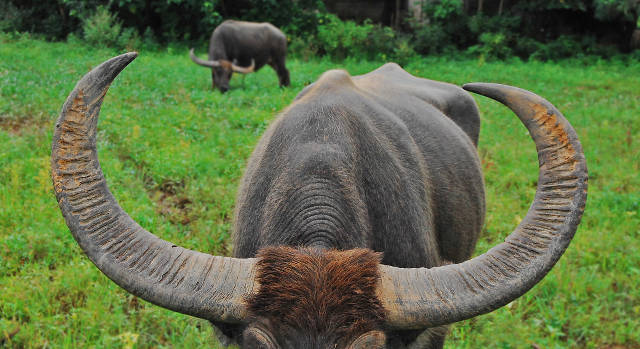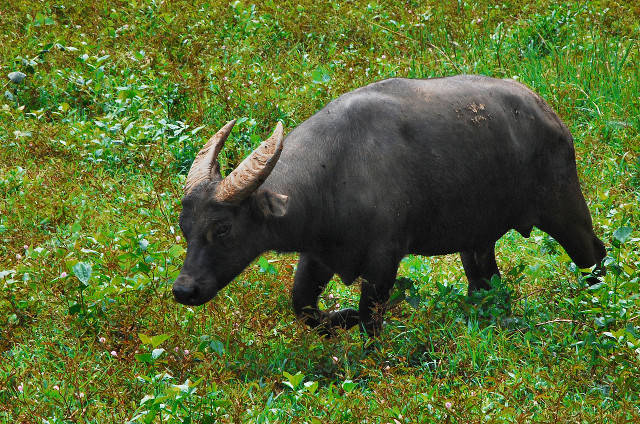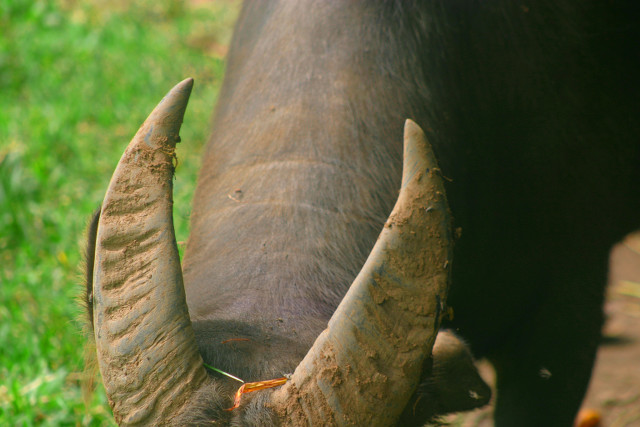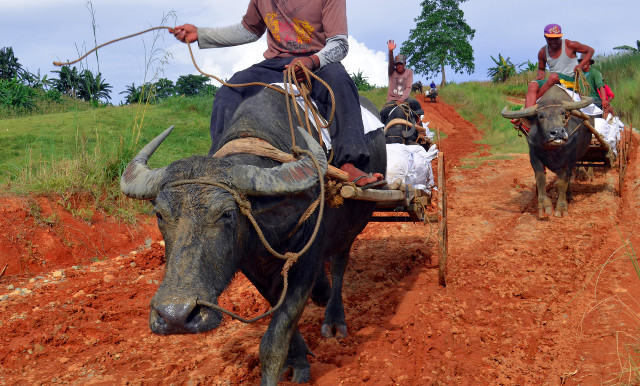SUMMARY
This is AI generated summarization, which may have errors. For context, always refer to the full article.
MANILA, Philippines – Let’s face it, the extremely rare tamaraw and the ever-present carabao look really similar. To celebrate Tamaraw Month, the World Wide Fund for Nature (WWF) presents quick ways to differentiate the two buffalo species.

The tamaraw (Bubalus mindorensis) stands 4 feet at the shoulder and weighs about 300 kilograms. It is solitary, skittish, and prone to charging when threatened or startled. During the Pleistocene Epoch 12,000 years ago, tamaraw herds ranged across mainland Luzon.
Extirpated by hunting, disease and land conversion, only around 350 hold out atop the rugged mountains of Mindoro in the Philippines. The country’s largest endemic land animal, it is today classified by the IUCN as critically-endangered, just one step above extinction.
Domesticated 5,000 years ago and introduced by Malay settlers to the Philippines some 2,200 years ago, the carabao (Bubalus bubalis) stands about 4.5 feet at the shoulder and weighs from 500 to 700 kilograms. Raised for milk, meat and hide, it is highly gregarious, docile and subservient – perfect for draft-work like pulling carts and ploughs. Around 3.2 million carabaos range throughout the Philippines, remaining the country’s most familiar and beloved farm animal.
As part of its “Tams-2” campaign, the World Wide Fund for Nature (WWF), Far Eastern University (FEU), Department of Environment and Natural Resources (DENR), Tamaraw Conservation Programme (TCP), and Hubbs-SeaWorld Research Institute (HSWRI) have deployed 4 camouflaged camera traps to Mindoro’s Iglit-Baco mountain range.
The high-tech cameras have given scientists insights on the habits of this secretive species. The “Tams-2” campaign promises to double wild Tamaraw numbers from 300 to 600 by 2020. – Rappler.com
Add a comment
How does this make you feel?




There are no comments yet. Add your comment to start the conversation.